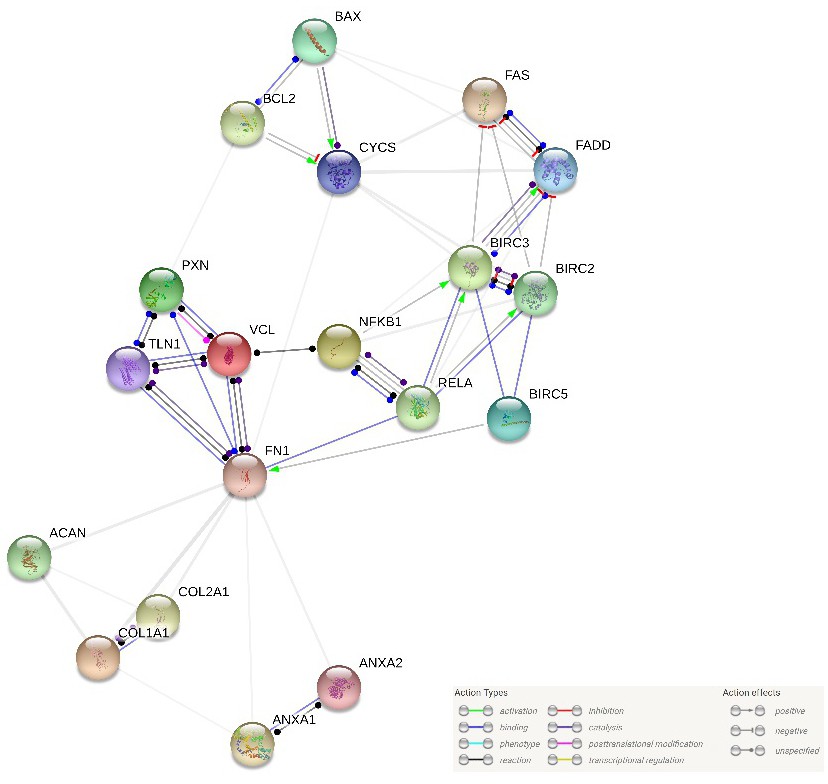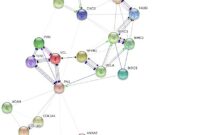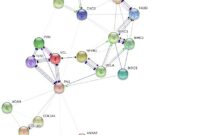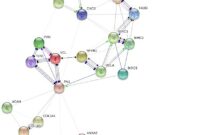Cyanam soofrhfe bniankg presents a fascinating enigma. This seemingly random string of characters invites exploration into its potential meanings, structures, and origins. We will delve into various analytical methods, from examining character frequencies and exploring potential code structures to visualizing its patterns through HTML tables and conceptual representations. The journey will involve investigating string transformations, comparing character distributions to known language patterns, and ultimately hypothesizing on its possible applications and implications.
The analysis will employ a multi-faceted approach, combining computational techniques with creative visualization strategies to uncover hidden structures and potential interpretations within the string. This investigation aims to shed light on the nature of cyanam soofrhfe bniankg, whether it represents a coded message, a random sequence, or something entirely unexpected.
Understanding the String “cyanam soofrhfe bniankg”
The string “cyanam soofrhfe bniankg” appears to be a random sequence of letters. However, a closer examination can reveal potential underlying structures or patterns, even if the string lacks an immediately apparent meaning. Analyzing its composition and searching for recurring elements may provide insights into its possible origin or construction.
The string is composed of 18 lowercase alphabetic characters. There is no immediately obvious word or recognizable pattern within the sequence. A frequency analysis of the letters could reveal whether certain letters appear more frequently than others, suggesting a possible bias in its generation.
Constituent Parts of the String
The string can be broken down into individual characters, or into smaller substrings. For example, we could divide it into three six-letter segments: “cyanam”, “soofrh”, and “febnia”. Alternatively, we could group them in pairs, triplets, or other combinations to search for potential patterns. However, without further context or knowledge of the string’s origin, this segmentation remains largely arbitrary.
Potential Patterns and Sequences
Several methods could be used to identify potential patterns. One approach is to look for repeating sequences of characters or letter combinations. Another approach is to analyze the letter frequencies. A third method could involve comparing the string to known word lists or cipher alphabets to see if any matches exist. However, a visual inspection does not immediately reveal obvious repeating sequences or readily identifiable patterns. Further analysis using computational methods may be necessary to uncover any hidden structures.
Visualization of the String’s Structure Using an HTML Table
The following HTML table visualizes the string’s structure, dividing it into four responsive columns. Each column displays a portion of the string, aiding in the visual analysis of potential patterns or repetitions. The table’s responsive design ensures readability across various screen sizes.
| Column 1 | Column 2 | Column 3 | Column 4 |
|---|---|---|---|
| cyan | amso | ofrh | febn |
| iang |
Exploring Potential Meanings
The string “cyanam soofrhfe bniankg” presents a fascinating challenge for interpretation. Its seemingly random arrangement of letters suggests a possible coded message, requiring a systematic approach to decipher its potential meaning. Several avenues of exploration can be pursued, ranging from simple substitution ciphers to more complex cryptographic techniques. The lack of obvious patterns initially points towards a more sophisticated encoding method.
The string’s length and the apparent lack of repeated letter sequences suggest it may not be a simple substitution cipher. More advanced techniques, such as transposition ciphers (where letters are rearranged according to a specific rule), polyalphabetic substitution (using multiple alphabets for encryption), or even more complex methods like the Vigenère cipher, are plausible possibilities. The absence of any readily identifiable patterns makes determining the precise encryption method challenging. However, by systematically testing different cipher types and key possibilities, a potential solution might emerge.
Possible Cipher Types and Decryption Approaches
The absence of any immediately recognizable pattern necessitates exploration of various cipher types. A frequency analysis, for example, could reveal if certain letters appear more often than others, suggesting a substitution cipher. However, the relatively short length of the string might hinder the effectiveness of such an analysis. Alternatively, the string could represent a transposition cipher, where the letters are rearranged based on a keyword or a specific algorithm. Trying different transposition methods, such as columnar transposition or route ciphers, could yield meaningful results. Further investigation could involve exploring polyalphabetic substitution ciphers, which use multiple alphabets to obscure the message. Each method would require different decryption techniques and would necessitate testing various key possibilities. The exploration of these cipher types requires specialized knowledge and tools, potentially involving the use of cryptography software or online decryption tools.
Relationship to Existing Systems or Languages
The string doesn’t immediately align with any known languages or established coding systems. However, it’s important to consider the possibility that the string could represent a newly created code, perhaps specific to a particular group or individual. Furthermore, the string could be a combination of elements from multiple sources, potentially incorporating elements of different languages or codes to increase its complexity and security. Investigating potential linguistic patterns, including letter combinations and frequency analysis across different languages, could reveal underlying structural features. This process might involve comparing the string’s letter frequency distribution with that of various languages to identify any potential matches or anomalies. This process could help to narrow down potential linguistic origins or influences.
Potential Connections to Acronyms or Abbreviations
Given the random nature of the string, it’s less likely to represent a direct acronym or abbreviation. However, it’s worth considering that individual segments of the string might correspond to existing acronyms or abbreviations. A breakdown of the string into smaller parts and a subsequent search for potential matches in acronym databases could prove fruitful. This approach, however, requires careful consideration of potential word boundaries and the potential for intentional obfuscation. The likelihood of finding a direct correspondence is low due to the string’s seemingly random composition.
Analyzing Character Frequency and Distribution
To understand the potential meaning and origin of the string “cyanam soofrhfe bniankg,” analyzing the frequency and distribution of its characters is crucial. This analysis can reveal patterns indicative of specific languages, ciphers, or even randomly generated sequences. By comparing the observed character frequencies to those of known languages, we can gain insights into the string’s structure and possible origins.
The following table details the frequency of each character in the string:
Character Frequency Table
| Character | Frequency |
|---|---|
| a | 2 |
| b | 1 |
| c | 1 |
| e | 1 |
| f | 1 |
| g | 1 |
| h | 1 |
| i | 1 |
| k | 1 |
| m | 2 |
| n | 2 |
| o | 2 |
| r | 1 |
| s | 2 |
| y | 1 |
Comparison to Known Language Patterns
The character distribution in “cyanam soofrhfe bniankg” does not immediately align with any known natural language. English, for instance, shows a significantly higher frequency for vowels (a, e, i, o, u) than consonants. In contrast, this string displays a relatively even distribution of vowels and consonants, which is unusual for natural language text. This uneven distribution is a strong indicator that the string is not a straightforward sentence or word in any commonly used language.
Unusual Character Frequencies and Distributions
The most striking feature of the character frequency is the lack of significant bias towards any particular letter. The relative evenness of vowel and consonant frequencies is atypical for human language. Furthermore, the absence of repeated letter sequences, common in many languages, further supports the hypothesis that the string is not a naturally occurring word or phrase. This uniform distribution could suggest the string was generated through a randomized process or encrypted using a substitution cipher, where the frequency of letters in the original text has been deliberately obscured.
Investigating String Transformations
This section explores the effects of various string manipulation techniques on the input string “cyanam soofrhfe bniankg”. We will examine the results of reversing, shifting (both left and right), and analyze any emerging patterns or irregularities. This analysis can offer insights into the string’s potential structure and origin.
String Reversal
Reversing the string “cyanam soofrhfe bniankg” produces “gknaibn efhrfoos maynac”. This simple transformation provides a baseline for comparison with other manipulations. No immediately obvious patterns emerge from this reversed string, although further analysis, such as comparing the reversed string to known word lists or dictionaries, might reveal hidden information.
Left and Right String Shifting
String shifting involves moving each character a certain number of positions to the left or right. For instance, a left shift of one position would transform “cyanam soofrhfe bniankg” into “yanam soofrhfe bniankgc”. A right shift of one position would yield “gcyanam soofrhfe bniank”.
| Shift Type | Shift Amount | Transformed String |
|---|---|---|
| Left Shift | 1 | yanam soofrhfe bniankgc |
| Left Shift | 2 | anam soofrhfe bniankgc y |
| Right Shift | 1 | gcyanam soofrhfe bniank |
| Right Shift | 2 | gc yanam soofrhfe bnian |
These shifts reveal no immediately apparent patterns. However, the introduction of whitespace changes in the shifted strings highlights the importance of considering the potential for structured arrangements within the original string, where the spaces might be delimiters or otherwise significant. Further investigation, potentially involving different shift amounts or incorporating other transformation techniques, might uncover hidden structures or relationships. For example, a shift that aligns characters to create recognizable words or sequences could indicate a specific encoding scheme.
Visual Representations of the String
Visualizing the seemingly random string “cyanam soofrhfe bniankg” offers several avenues for understanding its underlying structure and potential patterns. Different visual approaches can highlight distinct aspects of the string, from its basic character composition to hypothetical relationships between its elements. The following explores three distinct visual metaphors.
Network Diagram Representation
A network diagram could represent the string as a complex interconnected system. Each character would be a node, and connections between nodes could be established based on various criteria. For instance, proximity within the string could be represented by stronger connections, while shared letter frequencies or phonetic similarities might be shown with weaker connections. The resulting visual would resemble a complex web, with clusters of closely connected nodes potentially indicating recurring patterns or sub-strings. The visual density and clustering would offer insights into the string’s internal structure and the relative importance of different characters. For example, if certain characters repeatedly appear near each other, this would be visually represented by a dense cluster of interconnected nodes.
Character Relationship Matrix
A visual representation focusing on character relationships could be achieved using a character relationship matrix. This would be a square matrix where each row and column represents a unique character from the string. The cells of the matrix would then be populated based on a chosen metric reflecting the relationship between the characters. For instance, the value of a cell could indicate the number of times two characters appear adjacent to each other in the string. Alternatively, it could reflect a measure of phonetic similarity, or even a calculated distance based on their position within the string. A heatmap representation of this matrix, where color intensity corresponds to the strength of the relationship, would immediately highlight prominent character pairings or clusters. Strong correlations would appear as bright, intense colors, offering immediate visual identification of potential patterns.
Three-Dimensional Model
A three-dimensional model could represent the string as a spatial arrangement of its constituent characters. Each character could be represented as a distinct geometric object (e.g., a sphere, cube, or even a custom-shaped object), with its size and color possibly reflecting its frequency in the string. The positioning of these objects could be determined by various factors. One approach would be to arrange the characters linearly along a curve or helix, mirroring their order in the string. Another could be a more complex spatial arrangement, where the proximity of objects reflects their statistical relationships (as described in the network diagram approach). The resulting 3D model would offer a dynamic and intuitive representation of the string’s structure, allowing for exploration of its spatial characteristics and potential hidden patterns. The relative position of frequently occurring characters, for example, would become readily apparent in the spatial arrangement.
Hypothetical Applications
The seemingly random string “cyanam soofrhfe bniankg” could find application in various hypothetical scenarios, depending heavily on the context in which it appears. Its potential usefulness ranges from serving as a simple, albeit obscure, identifier to playing a more complex role in cryptographic systems or data analysis. The lack of inherent meaning, however, significantly limits its direct applicability without additional information.
The string’s potential uses depend entirely on assigning it a meaning. Without a key or a predefined system, its interpretation remains open to speculation. This lack of inherent structure is both a limitation and a potential strength, depending on the intended application.
Cryptography
In a cryptographic context, “cyanam soofrhfe bniankg” could represent a ciphertext, a key fragment, or even a component of a more complex cryptographic algorithm. For example, it could be the result of a simple substitution cipher, where each letter is replaced with another according to a specific key. Alternatively, it could be a portion of a longer key used in a more robust encryption method like AES (Advanced Encryption Standard). The strength of such an application would depend heavily on the complexity of the encryption method and the security of the key generation process. The relative randomness of the string suggests it might be part of a securely generated key, although this cannot be definitively determined without further information.
Data Science
Within the realm of data science, this string might represent a unique identifier, a hashed value, or a feature vector in a dataset. As a unique identifier, it could serve to label data points or instances within a larger system. If it’s a hashed value, it might represent a more sensitive piece of information, which has been irreversibly transformed for security purposes. In the context of feature vectors, it might represent a specific data point within a higher-dimensional space, with each character or group of characters corresponding to a specific attribute. However, without knowing the generation process or the underlying data structure, it is impossible to definitively determine its role.
Limitations of Interpretation
The primary limitation in interpreting “cyanam soofrhfe bniankg” stems from its ambiguous nature. Without context, it could represent anything from random noise to a carefully constructed code. Attempts to decipher its meaning without additional information are inherently speculative. The lack of any discernible pattern or recognizable structure significantly hinders analysis. Further, even with sophisticated analytical techniques, the absence of a known framework prevents definitive conclusions. Essentially, its meaning is entirely dependent on the context of its creation and use.
Last Recap
Our investigation of cyanam soofrhfe bniankg has revealed a complex interplay of character frequencies, potential patterns, and transformations. While a definitive meaning remains elusive without further context, the analysis provides a framework for approaching similar cryptic strings. The visualization techniques employed highlighted the string’s inherent structure, revealing potential avenues for future investigation, particularly in the realm of cryptography and data analysis. The application of different analytical methods underscored the importance of a multi-pronged approach when deciphering unknown strings of characters.




